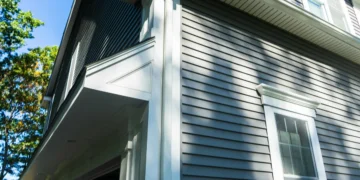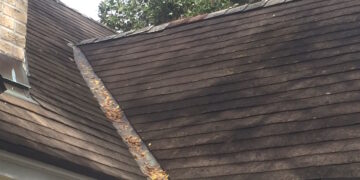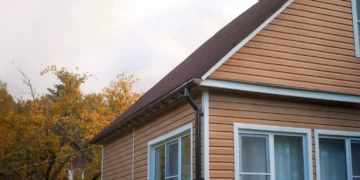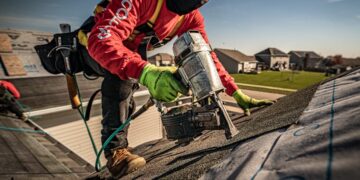Exploring the realm of new siding installation costs, this introduction sets the stage for a detailed discussion on the various factors influencing the expenses involved. From materials to labor costs, get ready to delve into the intricacies of siding installation expenses.
Moving on to the specifics of different siding materials and their impact on costs, this exploration aims to provide a comprehensive guide to understanding the financial aspects of revamping your home's exterior.
Factors Affecting the Cost of New Siding Installation
When considering the cost of new siding installation, several factors come into play that can impact the overall expense. Let's explore some key elements that influence the cost of installing new siding on a home.
Types of Siding Materials
Different types of siding materials have varying costs associated with them. Here are some common siding materials and how they impact installation costs:
- Vinyl Siding: Vinyl siding is one of the most affordable options, making it a popular choice for homeowners on a budget.
- Fiber Cement Siding: Fiber cement siding is durable and long-lasting, but it tends to be more expensive than vinyl.
- Wood Siding: Wood siding can provide a beautiful aesthetic but comes at a higher cost due to the material and installation requirements.
Size of the Home
The size of the home plays a significant role in determining the overall cost of siding installation. Larger homes require more material and labor, leading to higher expenses compared to smaller homes with less surface area to cover.
Labor Costs and Contractor Fees
Labor costs and contractor fees are essential components of the total expense of new siding installation. Experienced contractors may charge higher fees for their expertise, while labor costs can vary depending on the complexity of the installation job.
Additional Features
In addition to the basic siding materials and labor, additional features like trim, insulation, and underlayment can impact the overall cost of the project. These extra elements add to the complexity of the installation process and contribute to the final price of the siding job.
Cost Comparison of Various Siding Materials
When considering new siding installation, it's important to weigh the cost of different siding materials against their durability, maintenance requirements, and long-term value.
Vinyl Siding
Vinyl siding is one of the most affordable options, with an average cost of $2 to $7 per square foot. It is low-maintenance, requiring occasional cleaning with soap and water. While the initial cost is lower, it may not offer the same long-term value as more durable materials.
Wood Siding
Wood siding has a higher average cost ranging from $6 to $12 per square foot. It offers a natural and timeless look but requires regular maintenance, including painting or staining to protect it from the elements. Despite the higher initial cost, wood siding can add significant value to a home and may appeal to buyers looking for a rustic aesthetic.
Fiber Cement Siding
Fiber cement siding falls in the mid to high range of costs, typically ranging from $5 to $12 per square foot. It is durable, low-maintenance, and resistant to rot, fire, and pests. While the initial cost may be higher, fiber cement siding offers long-term savings due to its durability and minimal maintenance requirements.
This material can enhance the curb appeal and resale value of a home.Overall, the initial cost of siding materials should be considered in relation to their durability, maintenance needs, and potential impact on the resale value of a home
. Choosing a siding material that balances cost-effectiveness with long-term value is essential when making decisions about home improvement projects.
Additional Costs to Consider During Siding Installation
When planning for new siding installation, it's crucial to consider potential additional costs that may arise beyond the basic materials and labor expenses. These extra costs can significantly impact the overall budget for the project and should not be overlooked.
Permits and Disposal of Old Siding
- Permits: Depending on your location, you may need to obtain permits for the siding installation, which can incur additional fees.
- Disposal of Old Siding: Properly disposing of the old siding can also add to the total cost, especially if it contains hazardous materials.
Structural Repairs and Contingencies
- Structural Repairs: If your home requires any structural repairs before the new siding can be installed, this will be an extra cost to consider.
- Contingencies: It's essential to factor in contingencies for unexpected expenses that may arise during the installation process, such as hidden damage or the need for additional materials.
Location and Accessibility
- Location of Home: The location of your home can impact the cost of siding installation, with factors like local labor rates and availability of materials coming into play.
- Accessibility: If your home is challenging to access or requires special equipment for installation, this can lead to higher installation costs.
Warranties and Insurance Costs
- Warranties: Consider the warranties offered by the siding manufacturer and installer, as opting for extended warranties may involve additional expenses.
- Insurance Costs: Homeowners may need to review their insurance policy to ensure that the new siding installation is covered in case of any unforeseen damage or issues.
Cost-Saving Tips and Strategies for New Siding Installation
When it comes to new siding installation, there are several strategies homeowners can implement to save costs and maximize their investment. From DIY prep work to energy-efficient options, here are some tips to consider:
DIY Prep Work
- Before the professionals arrive, homeowners can remove old siding, trim bushes, and clean the work area to reduce labor costs.
- Consider painting or staining the siding yourself to save on professional painting fees.
Obtain Multiple Quotes
- Reach out to different contractors and suppliers to compare quotes and negotiate the best price for the installation.
- Be wary of unusually low quotes as they may indicate subpar materials or workmanship.
Energy-Efficient Siding Options
- Investing in insulated siding can help regulate indoor temperatures, reducing heating and cooling costs in the long run.
- Opt for durable materials like fiber cement or vinyl that require minimal maintenance and have a longer lifespan.
Maintenance and Care
- Regularly inspect and clean the siding to prevent damage and prolong its lifespan, avoiding premature replacement costs.
- Address any issues promptly to avoid more extensive repairs down the line.
Final Review
Concluding our discussion on the cost of new siding installation, we've covered the essential factors, comparisons, and cost-saving strategies to empower you in making informed decisions for your home improvement projects. Dive into the world of siding installation costs with confidence and clarity.
Helpful Answers
What factors affect the cost of new siding installation?
Factors such as siding materials, home size, labor costs, and additional features like trim and insulation can impact the overall cost.
How can homeowners save money on new siding installation?
Homeowners can save money by doing DIY prep work, getting multiple quotes, opting for energy-efficient siding, and maintaining the siding properly.
Are there additional costs to consider during siding installation?
Additional costs may include permits, disposal of old siding, structural repairs, and contingencies for unexpected expenses.
Which siding material offers the best long-term value?
The siding material that offers the best long-term value depends on factors like durability, maintenance requirements, and impact on resale value.










